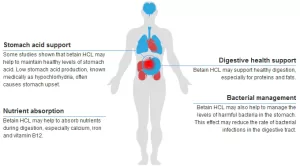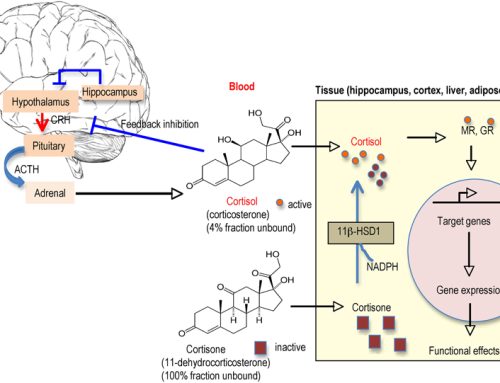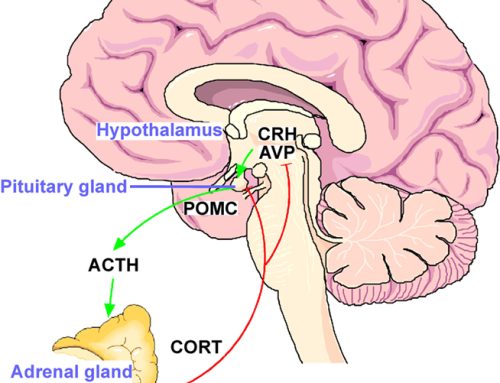Is low HCL is the cause of your GERD, SIBO or other troubles?
These directions will help you identify your personal dose for Betaine HCL w/pepsin. Different people will have different doses. And, as digestive function is restored your dose may change. The way to test for this is through a specific protocol below, not using a laboratory marker.
Using Betaine HCL w/Pepsin
HCL (hydrochloric acid) is made in the stomach and is an important component of good digestion. Low or sub-optimal HCL production (hypochlorhydria) can occur from reasons such as chronic bacterial infections like small intestinal bacterial overgrowth or other digestive disorders. Stomach acid needed to digest protein and absorb minerals and certain vitamins like B12. If you don’t have enough of it, you can’t absorb food properly and you may have increased risk for food poisoning and other infections (because the stomach acid is your first line of defense for destroying pathogens). Adequate HCL (hydrochloric acid, or, stomach acid) is also helpful for digesting and assimilating the proteins that we eat. You can put on more muscle if you properly break it down and absorb it.
Simple at-home test for low stomach acid
Do This 3 Mornings in a Row:
- Step 1: First thing in the morning, before you eat or drink anything, mix a quarter teaspoon of baking soda in four oz of cold water.
- Step 2: Drink the baking soda solution.
- Step 3: Start a timer and time how long it takes you to burp for up to five minutes.
- If you have adequate stomach acid you should burp within 2-3 minutes.
- If you don’t burp within five minutes, stop timing. You need more HCL.
Recommended HCL Dosages/Protocols
- Start slowly with 1 pill of betain hcl 10-15 minutes prior to a protein rich meal (I use the brand Bioptimizers and you can use code DRMOLLY for a discount).
- Make sure you wait at least 15 minutes to see how your body responds.
- Build up by one pill at a time at subsequent protein containing meals, until a slight burning, or warmth is noticed in the stomach.
- When you start to notice warmth, note that number of pills.
- Your optimal dose is 1 less than the amount that causes warmth. For example, if 5 pills burns, then take 4 each protein rich meal.
- If you experience burning or discomfort, you can mix 1⁄2 tsp of baking soda in water and sip this to de-activate the HCL and soothe the stomach.
- The typical normal adult dosage commonly 3250 mg to 4550 mg a meal. Many people need 5,000 mg or more for an effective dosage. You may need as many as 5-6 caps.
- Once proper dosage has been determined, take HCL capsules during the meal, rather than before eating.
- You may not need to take HCL with snacks between meals.
- Avoid drinking large amounts of water or fluids with meals. This dilutes stomach acid and enzymes and promote indigestion.
Contraindications
- Do not take HCL supplements if you have an active ulcer, or if you use anti-inflammatory medication such as corticosteroids (e.g. prednisone), aspirin, Indocin, ibuprofen (e.g. Motrin, Advil, etc.) or other NSAIDS.
- Do not use HCL Supplements if you have active gastrointestinal bleeding.
- Do not open capsules and empty them on food or in beverages. HCL is corrosive to tooth enamel.
Precautions
- Individuals with the lowest levels of stomach acid may experience the worst adverse symptoms because they are most likely to have atrophic gastritis (a thinned-out stomach lining), which makes them more sensitive to even small quantities of HCL than a normal, thick stomach lining.
- Stomach acid secretion declines as we get older. Studies have shown around 30% of people older than 60 have atrophic gastritis and produce very little acid. Another study found that 40% of women over the age of 80 produce no stomach acid at all.
- If you suspect you have atrophic gastritis, it’s better to try Digestive Bitters formulas or apple cider vinegar in water. Interestingly, the presence of stomach acid in proper levels helps to maintain proper thickness of the stomach lining!
Clarifications
- If you start to get up to a really high dosage (more than 6 caps) and still don’t notice warming, it may be that you really do need a lot of hcl. However, you should focus on using your symptoms as your guide to the efficacy of the supplement, not the burning feeling. Watch for reduced burping, bloating, farting, and less constipation or diarrhea.
- Your body will eventually adjust to taking Betaine HCL and will likely begin to product optimal levels on its own. This usually occurs when gut infections have been cleared, and it starts to heal. If the warming sensation or heaviness starts to occur, at your typical dosage that used to be your normal, you should begin reducing your normal dose by one capsule per meal. Continue to do this until you no longer need HCL.
Conclusion
Now that you have learned how to test for HCL you might want to consider:
- Seeing if you need digestive enzymes or bile acid factors to also aid in digestion. .
- In addition, I would recommend finding a functional doctor from the Institute of Functional Medicine or a Naturopath to run a comprehensive stool study to determine how well your gut is functioning and whether you need other supplements like probiotics or polyphenols.
If you want more comprehensive guidance, consider taking my online course, “Your Healthspan Journey” I taught at Stanford for 3 years which is truly the ultimate masterclass in health optimization.
Disclaimer: As an Amazon Associate I earn from qualifying purchases.




